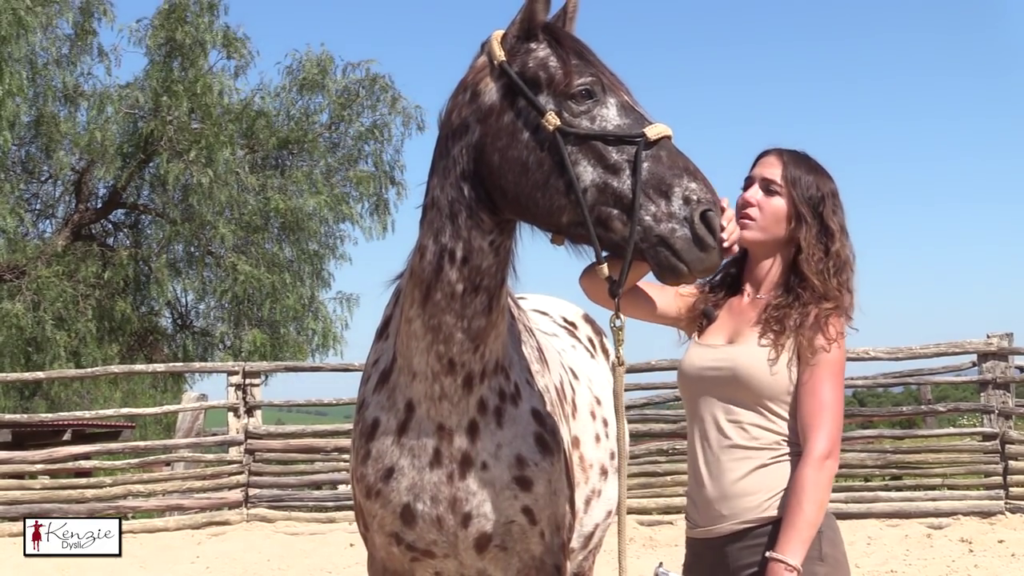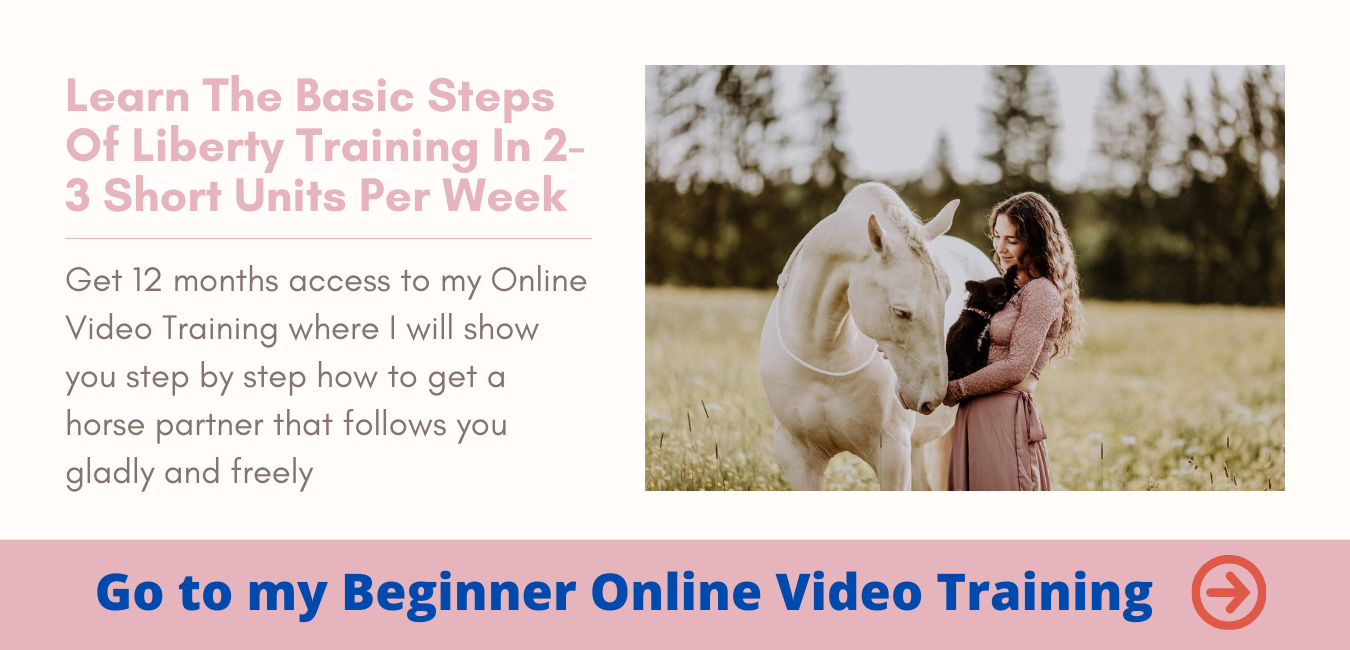Finding a healthy balance is difficult in many situations in life.
We often swing mentally between black and white, wanting a clear line – but perhaps outside our little equestrian world we often find this line in a healthy balance rather than in extremes?
The fact is: horse training can never be just black or white either.
Because we will not reach our goal if our horse is allowed to do everything – push us, bite us or even kick us. But we will also not reach our goal if our horse is forced to function like a machine – then trust, ease and fun will definitely fall by the wayside.
This means for us that we have to make decisions.
Clear decisions. We have to take a position and be sure of our cause.
But that is not so easy. Neither in everyday life nor with regard to our horse.
After all, there are so many emotions and desires involved.
I think all of us here are united by the dream of trust and freedom – freedom training where the horse dances with you joyfully and playfully.
But this freedom can only be achieved through clear decisions, consistency, good timing and above all: a lot of respect and love. One does not exclude the other – they complement each other.
Because in the eyes of a horse, a good leader, which of course you should become in your little herd of two, has very clear “soft skills” that make the crucial difference between safety and security – and in the wild in the herd, death.
The most important skill (if one can emphasize a single skill at all) is consequence.
Because it ensures that the framework and your actions as a human always remain clear and predictable for the horse.
The “rules of the game” are clearly defined, so to speak – and each of you has read the rules 😉
Imagine you are playing “Ludo” with your friends – but one of them doesn’t know the rules.
He doesn’t wait until he has rolled a 6, but comes directly to the playing field with his game pieces at every number.
This would cause an endless discussion, especially if your partner is not reasonable and insists that “his rules” are the right ones.
So, in the beginning, even with your horse, you may have to discuss “your rules of the game”.
Especially if something changes for your horse. Because if he is not used to clear boundaries, he will tend to question them even more temporarily, depending on his character.
In the long run, however, you will both benefit enormously if your rules of the game are clear and give you a firm framework in which each can rely on the other. This is indispensable for real and deep trust on both sides!
The rules of the game also determine whether your horse perceives you as a leader or not.
Because even if true leadership (which we unfortunately still find far too seldom in the executive chair) has absolutely nothing to do with harshness, “taking hold” or “pushing through”, it is an inner strength that comes to light in all actions and demeanor.
Now, if you look into a herd of horses, you will find that this chief position does not remain unchallenged forever, even if the herd leader has been doing his job well and fairly for a long period of time.
Depending on the character of the herd members, there will always be someone who questions whether the tried and true rules still apply.
So I can’t promise you that you’ll never have to argue with your horse again once he’s accepted you as a good leader – because that depends entirely on your horse’s character (and, of course, how confidently and well you sell your leadership).
But I can promise you that the discussions with any horse, regardless of his character, will become less frequent and smaller – often even invisible to others if you do “your job” well.
Because no horse wants to be the leader.
Of course, it’s in the blood of some more than others, but every lead animal is happy to “relax” for an hour or two a day away from its “herd obligations” and rely on the assessments of someone else who promises security, fun and an exciting task.
Far too often we forget that horses tick quite differently than we do in many areas – and therefore naturally feel comfortable in a different setting than we do.
I think the least we can do for borrowing their freedom and not letting them roam the world with their family ties is to at least meet them on their communication level – and give them what they need to feel comfortable.
But what is this now concretely?
Horses want:
Clear lines
…because they ensure that the horse can assess us and our behavior. It knows that there are limits and that we will not let ourselves be pushed around, kicked or bitten. This means safety – because a good leader knows how to avoid danger and how to handle dangerous situations.
Respect
…on both sides! If we demand that the horse respects our dance area, we are obliged to respect the horse’s dance area as well. Here, for example, we must always question what the horse really perceives as a reward – because many horses really don’t like to be touched during training. And the reward is finally for the horse, not for the human 😉
A task
…that challenges and nurtures not only the body, but also the soul and spirit. Instead of searching for water and surviving the dangers of the wilderness, it can now be fun in our care, above all, to solve puzzles together, learn new things or simply experience an adventure in the field. Many horses are often challenged far too little!
Love
…because only if you treat the horse well, your training can be fair and FOR the horse. It is too often forgotten that we should not just focus on our fun or even the results during training, but rather how our training can make a difference FOR that horse right now. What builds his confidence? How is his hindquarters getting stronger? How is it becoming more coordinated and supple in its movements? The training is always FOR the horse, not for us humans 😉
So let’s think today about which rules you would like to integrate into your everyday life.
Or does your horse already know all the important rules and you just lacked the confirmation that you are also allowed to make sure that your horse follows these rules?
By the way, this has nothing to do with becoming angry, unfair or emotional towards your horse.
Rather, imagine that you are a rock that radiates calm, steadiness and mindfulness.
No matter how much the sea around you is roaring, what storm is passing over you – you are the rock in the surf on which your horse can always rely.
But if your horse becomes careless and runs against the rock, it can be unpleasant.
I think you have also stubbed your toe on a rock, a step or a bedpost – and afterwards you didn’t blame the bedpost, but your careless movement, right? 😉
The most important thing is that no matter what happens, you always feel like the rock resting in itself.
This means that even if things get awkward because the horse ran into the rock and you corrected your horse, you don’t give the rock legs to chase and punish your horse. That’s not how the principle works.
When you run into a rock, it gets uncomfortable for a moment, but the rock doesn’t chase you. It is the same rock after the collision as it was before – and that’s the image you should always have in your mind.
This is absolutely logical for your horse, just as it is logical for you not to blame the bedpost for your aching toe 😉
Calm consequence is something from which both sides benefit enormously – and which makes your horse feel safe and in good hands.
And if you know the rules of the game and are confident on the playing field, you will also become a bit more confident every day. And that makes the game much more fun, doesn’t it? 😉
All the best,
Your Kenzie




